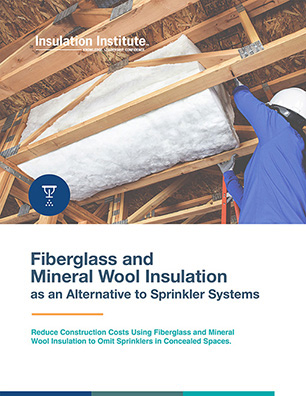Strong new home starts and an uptick in hiring in the construction industry means that new insulation contractors are added to company payrolls every day. With the rise of high-efficiency construction driven by certification programs such as HERS, ENERGY STAR, and LEED, quality installation is more important than ever. To combat common insulation installation issues, we look at three typical missteps made by insulation contractors when installing batts and review ways to avoid them.
Details »Insulation Institute Blog
Posts Categorized: Insulation
You Still Get What You Inspect
We don’t get out to jobsites often. Much of our time here at Insulation Institute is spent developing resources for building industry professionals on how to safely use and properly install fiberglass and mineral wool insulation products, and that keeps us in the office most days. But occasionally, we’re invited to a job site to observe the insulation installation. We relish these opportunities.
Details »Energy Efficiency Workforce Grows to 2.3 Million
E4TheFuture’s recently released 2019 report, “Energy Efficiency Jobs in America,” demonstrates the impressive growth of the energy efficiency workforce, which now numbers more than 2.3 million people. The annual report is based on data from the U.S. Bureau of Labor Statistics and is a comprehensive survey of thousands of businesses, using a methodology developed for the U.S. Department of Energy.
Details »3 Basics for Visibly Great Insulation Jobs
We’ve seen hundreds, if not thousands of photos of fiberglass insulation jobs here at NAIMA, some good, some not so good…and some superb. When we came across Yudah Schwartz’s post on LinkedIn, it immediately caught our attention because we recognized an exceptional batt insulation job. The precision shown in installing the batts properly was clearly visible in the photos. So, we wanted to know more. He recently shared his views on the three essentials to getting visibly great insulation jobs.
Details »The Case for Energy-Plus-Health Programs
Transformations taking place in both the home energy efficiency arena and healthcare are coming together in ways that present opportunities for these industries to work collaboratively to improve outcomes for customers. VEIC, a sustainable energy company with a mission to enhance the environmental and societal benefits of clean and efficient energy use for all people, is out with a new Energy-Plus-Health Playbook. The playbook examines a three-tiered approach to targeting unhealthy and substandard existing housing conditions that cause energy burdens and compromise the household health of low- and middle-income customers.
Details »The Air Sealing Learning Curve
When newer editions of the International Energy Conservation Code (IECC) are introduced in states, often there’s a learning curve for home builders, especially when it comes to verification of a home’s air tightness with a blower door test. Some builders are having a tough go of meeting the new requirements. Increasingly, they’re relying on energy efficiency professionals, like HERS raters to help them achieve the target. Insulation Institute spoke with Jonathan Lang, Manager of Training & Certifications for Knauf Insulation who is a BPI Certified Building Analyst, Building Performance Specialist, and ICC Residential Energy Inspector (whew!). We spoke about the challenges builders face in meeting air tightness requirements and why communication and education are so critical to meeting the targets.
Details »Reduce Costs with This Sprinklers Alternative
According to the Fire Protection Research Foundation, the median cost of a residential sprinkler system is $5,000, but the maximum cost of a system averages $21,000. Those are huge numbers that contribute to the builder’s total cost of construction. Builders may be able to cut their overall costs for sprinklers by using fiberglass and mineral wool insulation as an effective, affordable passive fire protection solution in concealed spaces and ceiling cavities in low-rise buildings and one and two-family dwellings. NAIMA has released a new publication detailing the new provisions of the 2019 National Fire Protection Association (NFPA) Standard 13 on when sprinklers may be omitted.
Details »Report Gives Guidance on Specifying Healthier Insulation
Energy Efficiency for All recently released a new report, “Guidance for Specifying Healthier Insulation and Air-Sealing Materials.” The new report is a supplement to a publication produced last fall, “Making Affordable Housing More Energy Efficient: A Guide to Healthier Upgrade Materials,” which ranked insulation materials used in multifamily residential insulation retrofits from least to most hazardous. According to the report, fiberglass insulations are among “the best insulation materials from a health perspective…and we recommend their use whenever possible” in residential multifamily housing stock.
Details »Premium Construction With A Cost-Effective Product
Thrive Home Builders is one of the most respected production builders in the country with a multitude of awards and accolades to prove it. The Denver-area company is well-known nationwide for its sustainable, energy-efficient construction, with 100 percent of its homes meeting a minimum of Net Zero Energy Ready status. Thrive commands a 10 to 25 percent price premium for its high-performance new construction homes, so one could assume that every product used in its builds would also come at a price premium. Yet, Thrive CEO and Founder Gene Myers told Insulation Institute that cost-effective blown-in fiberglass insulation is a preferred product in his company’s homes.
Details »Matt Risinger Might’ve Made Our Day!
We at Insulation Institute spend a good deal of our time talking up the benefits of using fiberglass and mineral wool insulation. As much of the content of our blog is geared toward new residential construction, we value connecting with builders who use these products to achieve high-performance new home construction. So, we were thrilled to catch up with Matt Risinger, a Texas home builder and building science enthusiast (and a rock star) who specializes in high-performance, architect-driven home building during the International Builders Show. We’ve heard Matt speak at the International Builders Show in the past and we know his time is a valuable commodity, so we only asked him one question during our brief chat. His answer didn’t disappoint.
Details »









